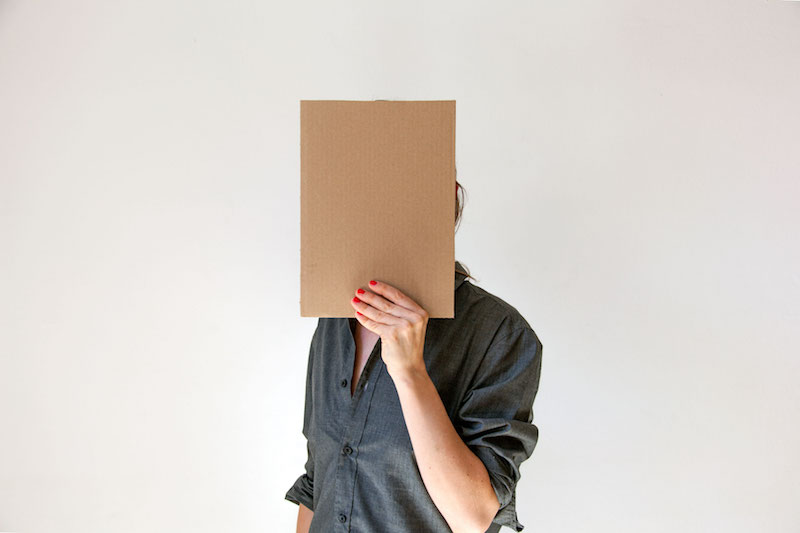
ekw14,90, Imperativ (l'individu dans l'image), 2016
HD video, courtesy ekw14,90
The artist collective ekw14,90 was founded in Graz in 2000 by Moke Klengel, Christoph Rath, Marlies Stöger, and André Tschinder. Together they conceived numerous exhibitions and projects working in the fields of video, photography, music, theater, drawing and publishing.
In their current exhibition “eh ben” at Künstlerhaus – Halle für Kunst und Medien, in Graz, the collective presents a new kind of artistic avant-garde, the “Zu-Realisten” – a pun that combines the concepts of being “too realist” and moving “toward realism”– and their approach in perceiving reality. In Graz we talked about the potential of the subjunctive, the imperative, art manifestos and how this influences the perception of reality.
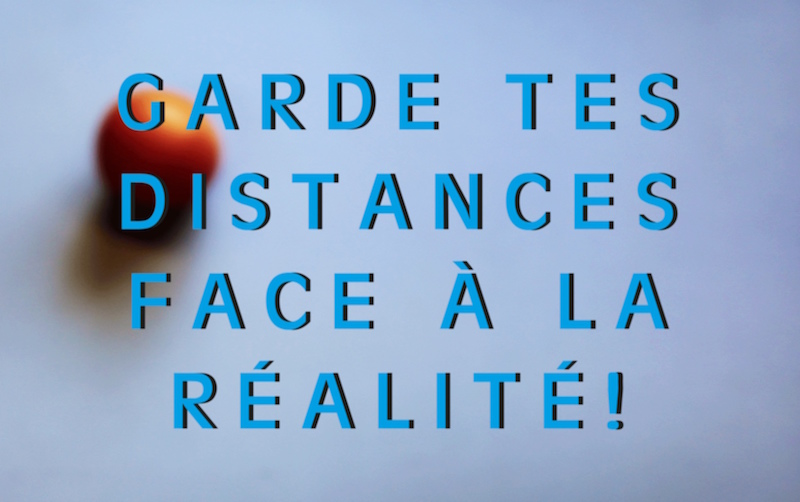
ekw14,90, Imperativ (film), 2016
HD video, courtesy ekw14,90
Helene Romakin: How did you come up with the name ekw14,90?
Christoph Rath: As usual for ekw14,90, it was a wonderful story, how the name came up, back then sitting at the table ...
André Tschinder: ... but everyone tells it differently.
CR: Yes, however, I know that I am right.
Marlies Stöger: I am very confident of my story too!
AT: I know it from Christoph, I think ...
MS: That Christoph is right and you aren’t?
MK: But what we know is that we knew we wanted to do a radio broadcast in which all kinds of different things could happen and to do so we needed a name ...
AT: ... urgently.
Moke Klengel: But you could reveal that 14,90 is a price quotation still in Schilling and not in Euros, for example.
CR: Yes ...
MS: Yes, I think one could say that. Yet, we don’t agree how we came up with that, but for the radio broadcast the main title „endlich Katzenersatz“ (Finally Cat-Replacement) and as subtitle the special offer for Wurstenden (ends of sausages) in Schilling was chosen.
AT: Any objections?
MS: Objections???
CR: No.
MS: Anyhow, it became the title for the radio broadcast and its abbreviation, which meanwhile exists only as an abbreviation, is the name of our artists’ collective.
AT: I would say, it exists now as a series of letters and numbers, it is ...
MS: Yes.
AT: ...not an abbreviation anymore.
HR: When you founded the collective did you think of any particular goal, idea or even a manifesto where your group thinking should lead to?
MS: Yes, when we started the radio broadcast, we wrote something similar to it. Not a manifesto, but we created some statutes. In its format it was closer to a club than to a manifesto. In any case, we drafted goals and intents, but after one year we burned the statute – publically in a radio broadcast, live. Because we found it too restrictive ...
AT: In the vigor of dealing with being set in stone, there are some parallels between ekw14,90 and the “Zu-Realisten“ ...
HR: You are referring to the radio station Radio Helsinki that still exists. Could you tell more about its program?
MK: We grew up with Radio Helsinki, an independent radio station in Graz.
MS: This non-commercial radio station is organized as a club where everyone can contribute and get airtime for everything, regardless what you would like to do.
CR: ... and we started to run the Thursday evenings in 1999.
AT: From 1am to 6am and later from 11pm to 4am.
MS: In the radio broadcast we wanted to try everything that was possible within the medium.
AT: Live music for example, “Leonardo da Vinci and live of crack,“ or “the pepper mill“ ...
MS: ... Live radio drama “Captive on the ants island“ ...
AT: We also tried various live-foley-experiments, i.e. „Marie France and her talisman“ ...
CR: ... Discussion round tables ...
MK: Science magazines such as „The Glue“ and “The Goat: Cow of the small man.“
MS: and so on ... Of course, we used the advantage of not being seen on radio and claimed to be at all kinds of spaces ...
AT: We have seen almost the entire world, even though we have never been there.
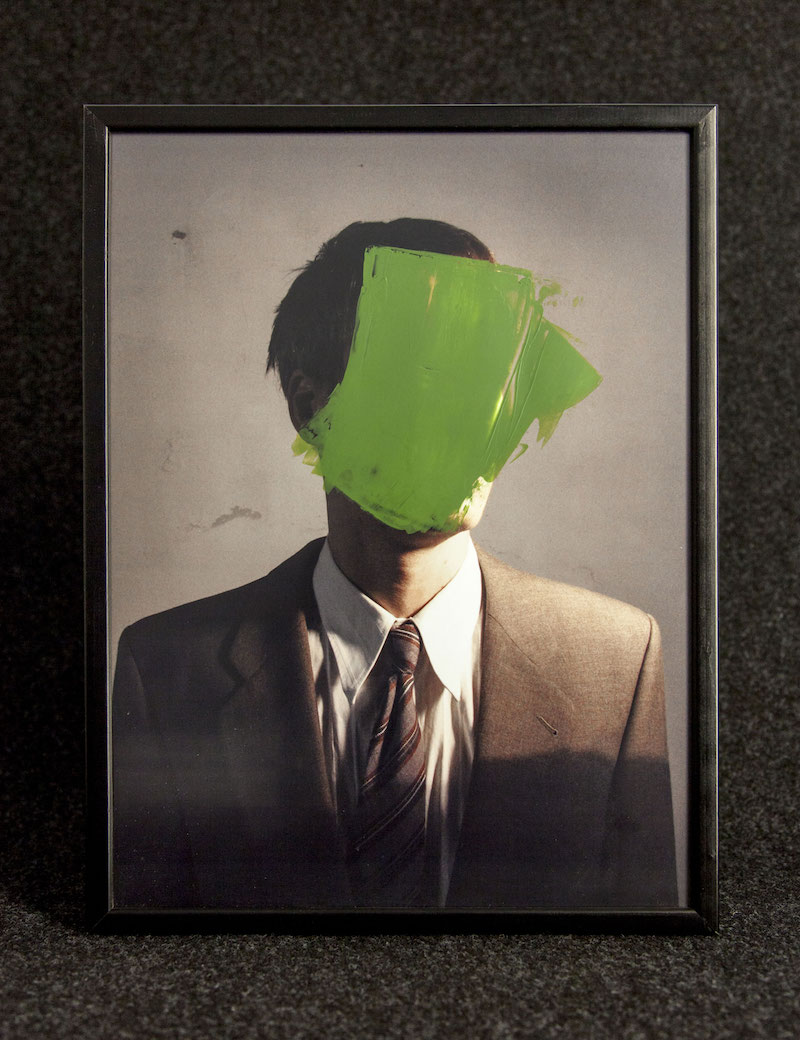
ekw14,90, Subjonctif (Das Individuum im Bild), 2016
photography, 65 x 50 cm, courtesy ekw14,90
HR: The “Zu-Realisten” are the protagonists of your exhibition as they represent the fictitious artistic movement that is not pursuing any political goals, but rather focuses on the well-being of the individual. Could you tell me more about the reality and the goals of this movement?
CR: For me, if we want to keep it short, the question has already anticipated all answers.
AT: The movement of the “Zu-Realisten” is completely fictitious, doesn’t have any political goals and focuses on itself. But what doesn’t come up here is the escapism, which is very significant – the withdrawal from ...
MS: ... the non-necessity to act ...
CR: ... the escape from the too real.
MS: Exactly, so the desire to be creative and produce art, but without dealing with the own surroundings and society, and so on.
AT: This would be the reality and what would be the goals? Do they have any goals at all beside the isolation and the best possible reduction of everything that rains down on you?
CR: No, in the end they don’t have a goal. At least we haven’t heard of it, we never wrote it down on paper neither.
MS: ... the goals would probably be self-sufficient artistic expressions.
HR: So without the will to improve the world, but rather with a “it-doesn’t-matter-as-long-as-I-am-well“-attitude?
MS: In the understanding of the “Zu-Realisten” that would actually be the improvement of the world.
CR: Exactly.
MS: Of their world – one must say.
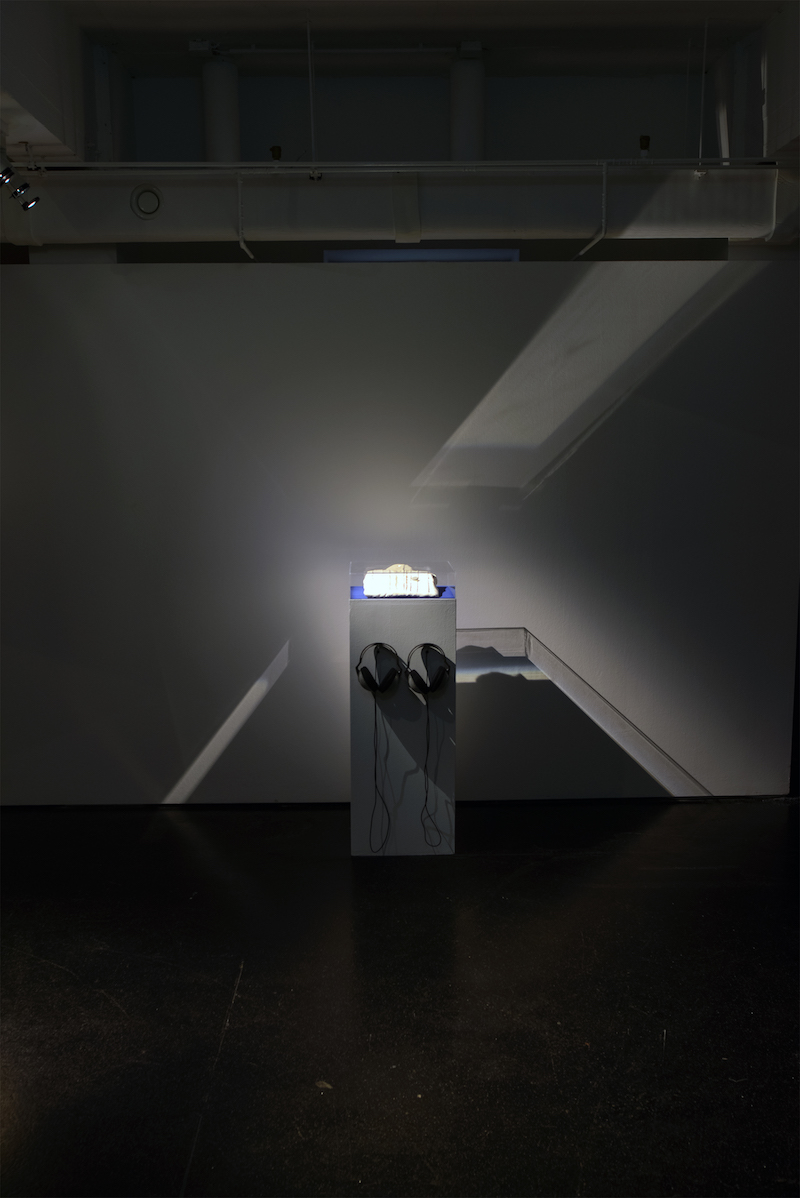
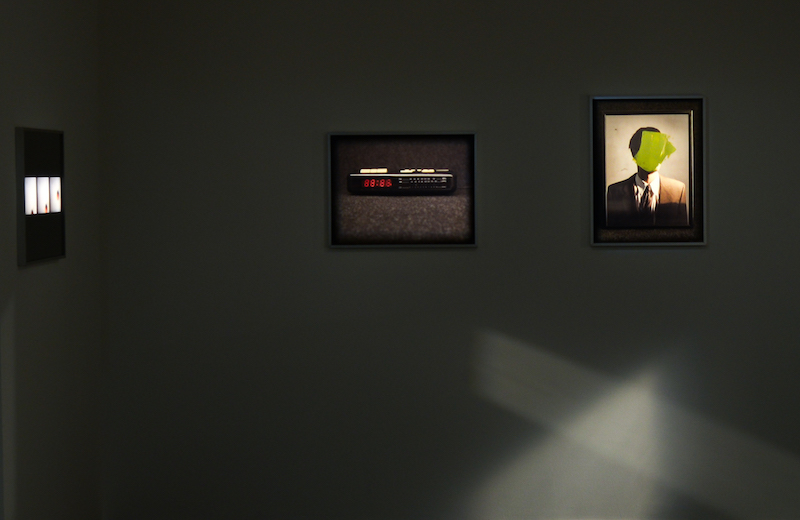
ekw14,90, eh ben, 2016
exhibition view, Künstlerhaus, Halle für Kunst & Medien, photo: Sven Buchholzer
HR: The exhibition at Künstlerhaus Graz is called “eh ben.” Do you mean by that “Ja, eben” which basically implies a status of a found truth or a won argument? Or might it be “Alles ist eben” which rather goes in saying everything is flat?
CR: I would say: No, this is a misunderstanding since “eh ben“ was made up by ekw14,90 and not by the “Zu-Realisten” and concurrently: Yes, yes! This exact association should be allowed. Maybe, as ekw14,90 I would say: Here, I don’t want to commit to something. I am not going to cast it in concrete!
MS: I would add that both interpretations are correct, but also the third version belongs to it, the French one.
Ma: ... where “eh ben“ actually means “well er“ or “well yes".
CR: I find it important that when you hear it in French and German the question doesn’t appear at all.
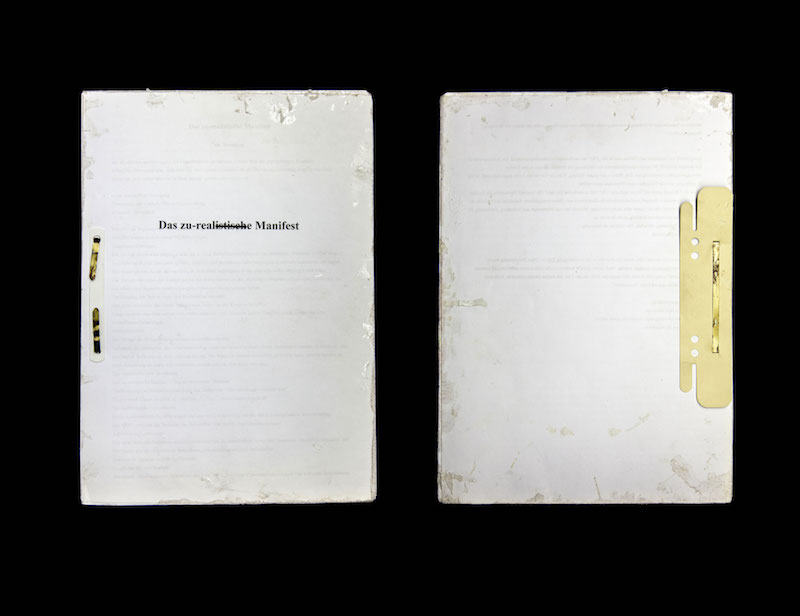
ekw14,90, Subjonctif (Manifest), 2016
photography, 50 × 65 cm, courtesy ekw14,90
HR: The fictitious manifesto “The Too Real Manifesto” written by the “Zu-Realisten” didn’t stand the pressure of different ideologies and their contradictions as expressed by several members of the group and that was demonstratively glued together. Art manifestos have a long history and usually were written as a reaction to serious political and social struggle. Do you see any real current developments that could serve as potential triggers for the “Zu-Realisten”?
CR: Here I would like to give a one-word-answer and vote for it: Who votes for a “yes“ and who votes for a “no“? I would say: No.
AT: No?! Actually the answer says: both. No, because in regard to the laws of the game the “Zu-Realisten” are already passé. Yes, in terms of the artists’ collective ekw14,90 who created the whole construction of thoughts. As ekw14,90 we are well aware of living in the presence and having put all impacts into the “Zu-Realisten.”
HR: As ekw14,90, do you think that today art manifestos could create the same impact as in the beginning of 20th century?
MK: No.
MS: I also believe: not in the arts. There are maybe some movements... societal, political, but artistic ... I don’t think so.
MK: Especially, when talking about the same impact, I also have to say: no.
CR: Today’s art is mainly market. These days manifestos are beautiful, but in the end the interest lies in the question who is bought by Cartier. Of course, this sounds quite bitter, but the art of the 21st century lost its innocence in a way ... the art lost it or didn’t protect it ... because it was easily absorbed by capitalism.
AT: Maybe the manifesto – in the sense of a collected text – is the wrong medium, as people are already full with disclaimers that produce lots of texts where you only press “accept“ anyway. Nowadays, the format is rather a video blog or a virtual reality environment where things can become manifest.
CR: A picture is worth a thousand words?
AT: Yes.
HR: In “eh ben” the audio guide “Subjonctif” (2012/16) and the film “Imperativ” (2015/16) lead the visitor into the world of the “Zu-Realisten.” As implicated in the titles you give suggestions and orders of perception. What possibilities do you see in the art of mediating between realities, worlds and between the art itself and the viewer?
MS: Our strategy has always been to push the limits of prevailing rules and mechanisms. No matter what medium and format we are working in. In the radio we focused on journalistic methods and listening habits ...
AT: ... radio formats ...
MS:... genres ... and in the visual arts we do the same: we address the style of presentation and the formal strategy, but also its mediation, taking different roles of representation: How is the story told?
The mediation plays a big part in bringing the work to public, for example in a exhibition. And with this, you can play a lot.
CR: Yes, it is not just text to image, we ask who is the person speaking the text.
MS: Different plots are part of mediation.
AT: Always?
MS: At least for the project „eh ben“ this is the case.
AT: Self-reflective, so to speak.
HR: The fanzine accompanying the exhibition shows on its cover a combination of phrases, such as possible worlds, realised worlds, probable worlds, plausible worlds, building a “Möglichkeitsraum” – a space of all possibilities. How can artistic spaces of all possibilities broaden the possibility of our own perception of reality and can this be useful?
AT: Yes, this is what I would say!
CR: So all possibilities of the "Möglichkeitsraum" build already the space of all possibilities: including the possibility of one possibility.
AT: A possibility that slops over back into reality is in demand, in order to settle down and effect something. In this sense, to be "useful". In the way it opens possibilities in the "Möglichkeitsraum", which in reality you understand as a possibility.
MS: In the “Möglichkeitsraum“ you simply exercise one construct of thoughts as we did for example with the “Zu-Realisten.” We just formulated an idea and exercised it to the end ... and we realised that this idea was meant to fail. We just spared some work for people who might have had similar, "zu-realistic", approach.
CR: The “usefulness“ lies in the inspiration.
MK: The “Möglichkeitsraum“ is a cool suggestion to reflect things. Sometimes it triggers a button in your brain, and sometimes not.
HR: As part of the steirischer herbst festival in Graz you created alternative spaces of possibilities in your exhibition project, in the sense of replacement events of the actual program. Could you speak more about this project?
AT: The leitmotif of the festival was “Strategies for avoiding misfortune“ and in this sense we were the insurance of the festival. Should a cancellation of an event occur or an art work be damaged and you need a replacement, we would provide one.
MS: For each artistic contribution of the festival‘s program a content related work of replacement ...
AT: ... a work of insurance?
MK: We set up a storage at the festival center where the audience could see the works that were produced as a reinsurance for the festival. We were always present and managed it very bureaucratically and with a dry seriousness ...
AT: ... and at the same time, we made some performative education program: when somebody wanted to see a specific project then the object was taken out of the shelves by us, the storekeepers, to be temporarily presented.
MS: And of course, we thought of the case of our own cancellation!
AT: The replacement storage as a computer game.
MS: This „secondary art“ or „expropriation art“ as Robert Pfaller called our work back then ... these artworks for other art works ... this situation definitely opened a possible „Möglichkeitsraum“ to the visitors.
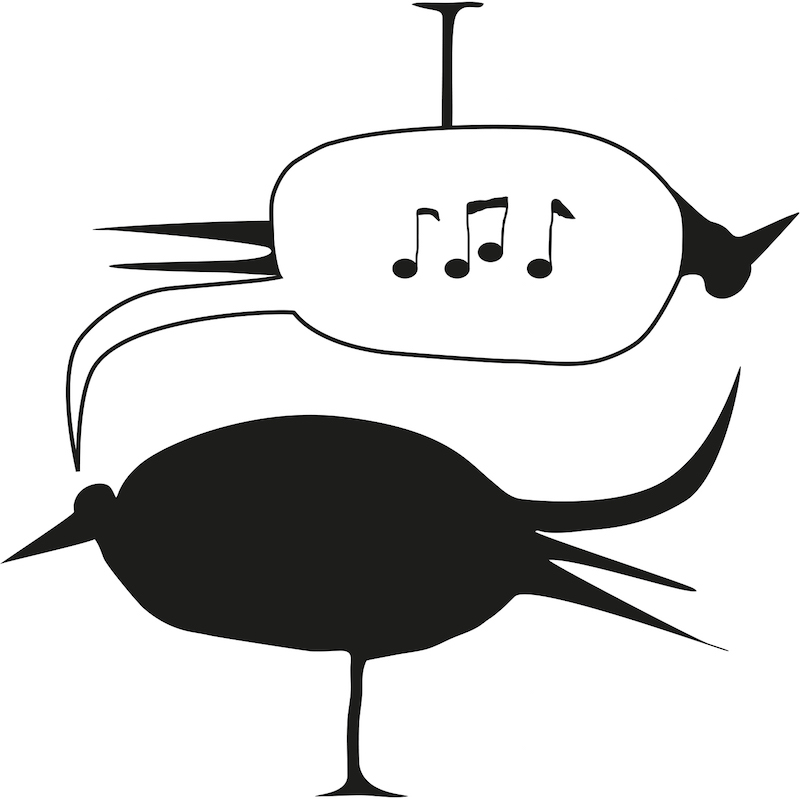
A brief excursion into biology: When the male blackbird begins singing its complex melodies in the springtime, it opens up space for possibilities in the female blackbird’s understanding of grammar. When the mangoose lemur on the Cormoros Islands is warned of possibly danger-possibly-fatal-when a bird takes wing, we can be astonished at the prosimian’s unbelievable ability to grasp abstraction, his facility to comprehend a what-might-happen-situation.
HR: Do you believe in the potential of irritation and confusion?
All: Yes!
HR: Can it be helpful in finding a new reality or rather change the perception of an existing reality?
All: Yes!
HR: And what role does humor play in your artistic work?
All: The leading role!
HR: The longing for historicity and the search of meaning in retrospect is currently present in all facets and fields of creative environments. Do you think the “Zu-Realisten” could follow this trend? Or, could you imagine to do a retrospective of the movement in let’s say 10 years from now?
CR: It is already a retrospective.
MS: With a strong reference to presence, it could also be that – if you are able to find it – there are some points of references that will appear again. They could be revised, for example as a virtual reality thing ... as terracotta warriors ... that will be fired to another planet ... or whatever the right format would be for such idea.
CR: I can also imagine that technology will change imagination, but is already a retrospective ... enriched by new works.
A: As much as the part of the “Imperativ“ positions itself to the older part of the “Subjoctif“, it could be that in 10 years there will something that takes a stand to the “Imperativ“ or to both.
MS: I think that it could be interesting to exhibit again in 10 years. Just to see how it still fits to the then current time and how much it will be caught up ... whatsoever ...
AT: Would that be post-historical?
eh ben
19.08 - 15.09.2016
Künstlerhaus. Halle für Kunst & Medien
Burgring 2
8010 Graz, Austria
Tuesday to Sunday, 10am–6pm, Thursday, 10am–8pm
Upcoming Event
15.09.2016, 18h
Artist talk with the curator Christian Egger
KM - Halle für Kunst und Medien, Graz
